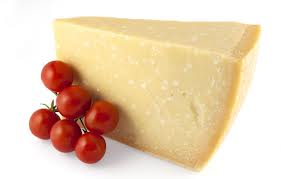Over the last few decades, cheese has been turned into a nutritional villain by those who believed that a low-fat diet was the healthiest, and the easiest with which to lose weight. But now we know that certain types of cheese (and other dairy products) are actually extremely beneficial to both health and fat loss. It’s all about the cheese you choose.
What the Newest Research Says about Cheese
The reason that diets like the keto and Paleo diets and several other high-fat, high-protein programs are so popular and so well-received these days is that research has shown us so much more about the value of the right fats, those saturated fats that come from the milk and meat of grass-fed, animals.
These foods are loaded with healthy saturated fats, which not only improve several areas of health, but also help you to lose your own stored fat.
Grass-Fed Cheese and Blood Sugar
One of the really important ways that the fats from grass-fed cheese improve both health and fat loss is by helping to regulate blood sugar.
A recent study conducted in Denmark found that blood sugar was better regulated in people who consumed one ounce of grass-fed cheese per day. They found this was also true of people who consumed other fermented dairy, like yogurt and kefir.
The researchers believe the Vitamin D and K content in grass-fed milk cheese may be the secret to its impact on blood sugar. Vitamin D is naturally present in the milk, and Vitamin K-synthesizing bacteria are used to start the fermentation process.
Grass-Fed Cheese and CLA/Omega-3 Fats
The really important nutritional difference between cheese made from grass-fed cows, rather than commercially-raised animals is the fats themselves.
One ounce of grass-fed cheese typically contains at least 30 milligrams of conjugated linoleic acid (CLA), and CLA has a huge array of health benefits, from reducing inflammation to improving blood sugar regulation, increasing bone density, reducing body fat and improving brain function and mood.
Grass-fed cows also produce cheese that is high in Omega 3 fats, and has a better ratio of Omega 3 to Omega 6 fats. Most grass-fed cheese will supply you with at least 100 milligrams of Omega-3 fats per ounce.
How to Choose the Right Cheese
While you don’t want to go hog-wild with cheese because of the calorie content, it’s obvious that consuming one or two ounces per day can actually help you lose weight and get healthier. But you have to choose the right cheese.
First of all, understand that labels that say “grass-fed” or “pasture-raised” can be deceiving. By law, manufacturers can use those labels, even if a cow only spends one day out of its lifetime on actual pasture. You need to select cheese that is labeled “100% Grass-Fed” and “100% Organic.”
You also want to go for the full-fat or whole milk version of your favorite cheese, as they contain more of the healthy fats you’re looking for and have been subjected to less pasteurization and processing.
Now, all you need to do is enjoy your delicious and satisfying cheese treat each day, and stop worrying about fat content.









what is the replacement of eggs since i m alergic
Hi Deepa,
To get similar nutrients from fats and such as an egg you could eat grass fed beef, or avocado instead.
All the best,
Anna, CPT, FF Specialist